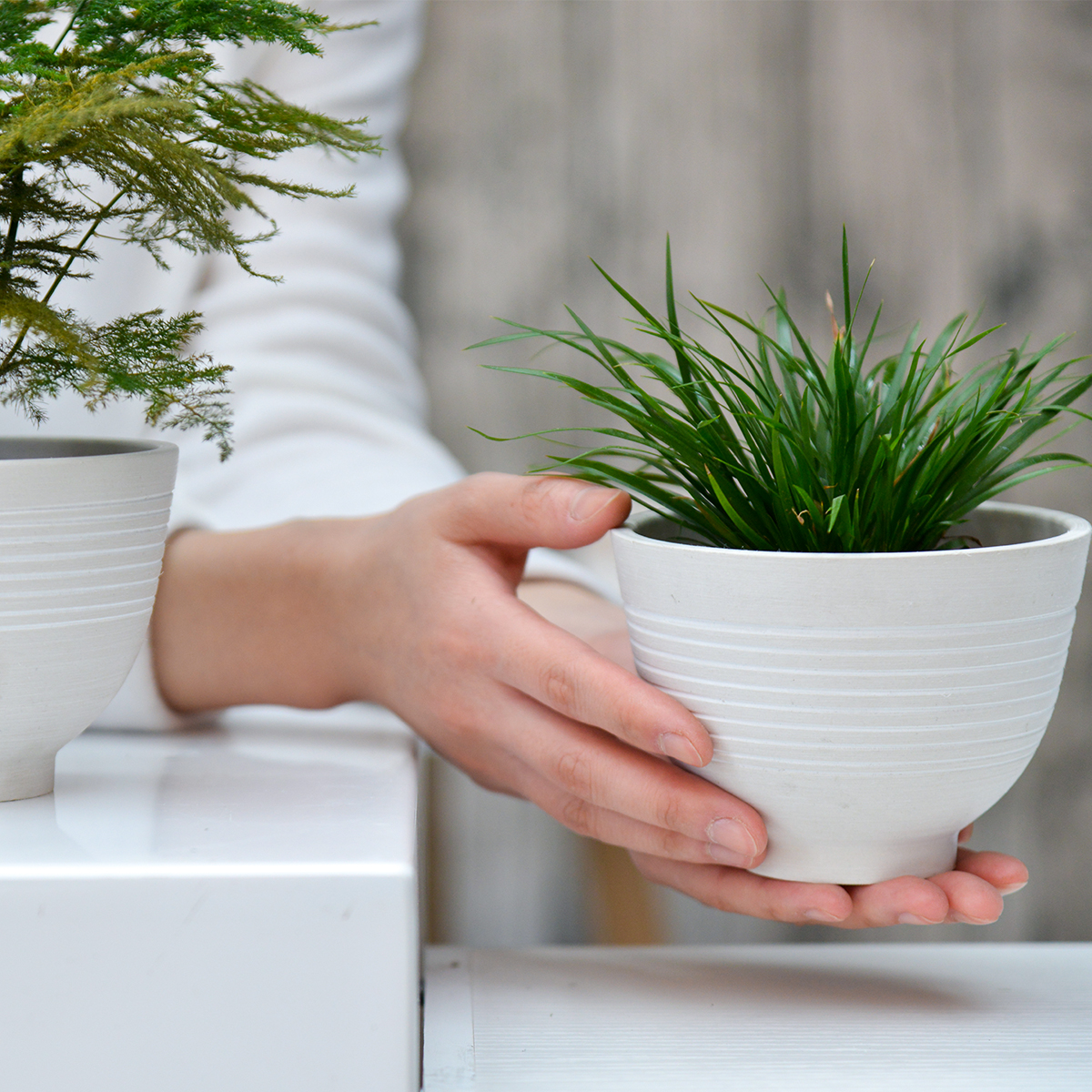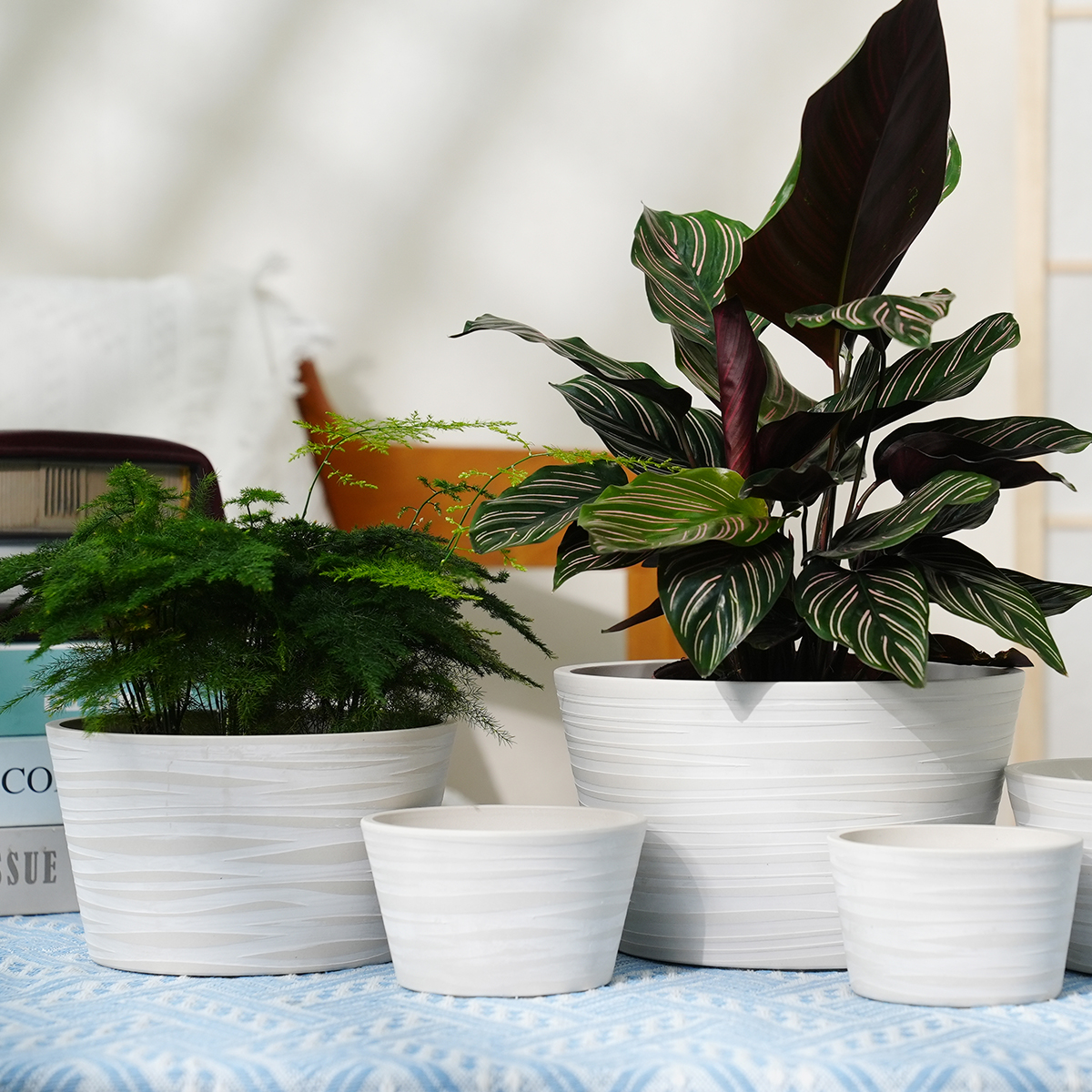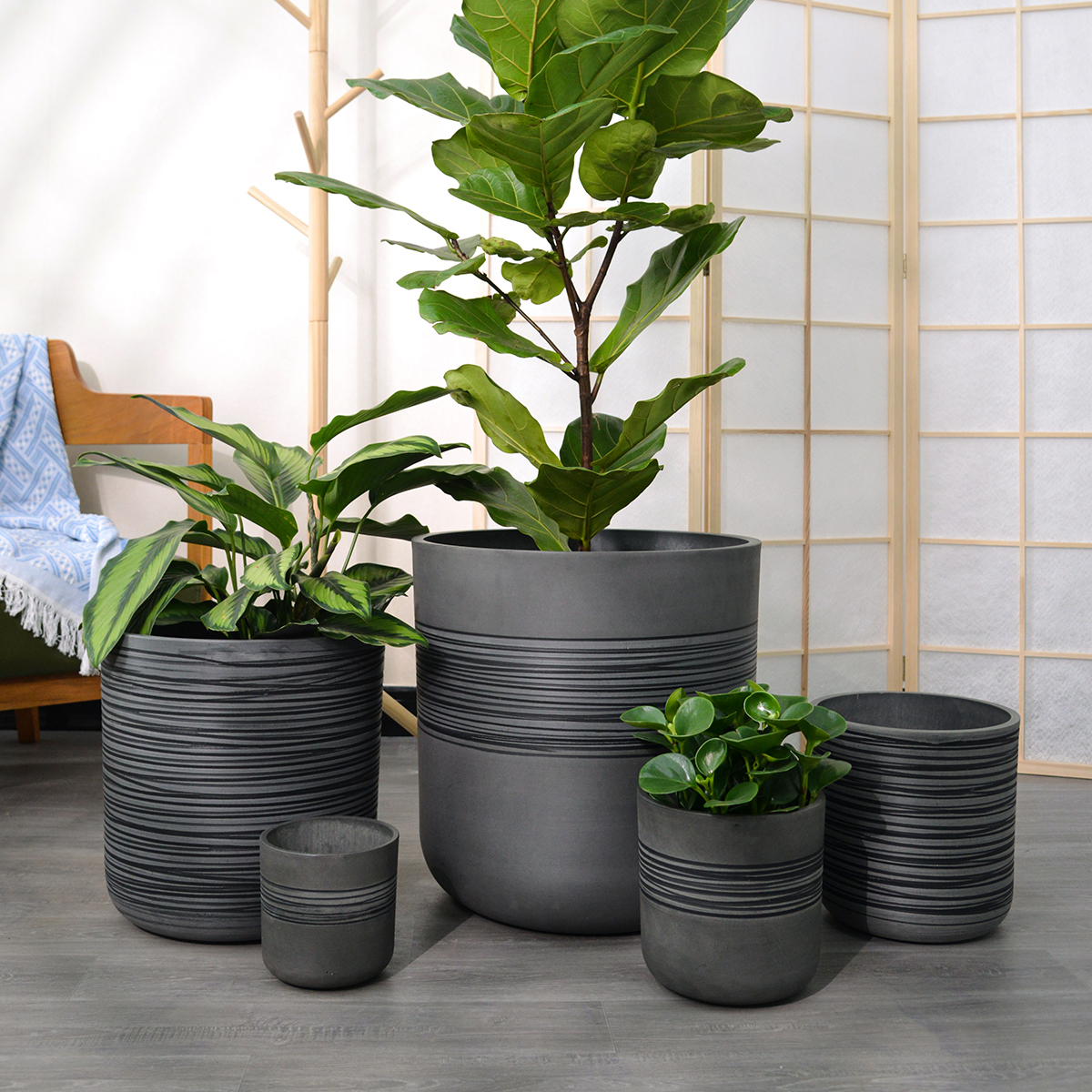Large Outdoor Planter Weight & Movability: What to Consider & Lightweight Options
Large outdoor planters are wonderful for creating dramatic focal points, adding privacy, or bringing greenery to hardscaped areas. However, their impressive size comes with a practical consideration that is often overlooked during the excitement of choosing the design: their weight, especially once filled with soil and plants, and the resulting ease (or difficulty) of moving them.
So, when buying large outdoor flower planting boxes, do you need to consider their weight and ease of movement? Absolutely. And are there lightweight yet sturdy options available? Yes!
Why Weight and Movability Matter for Large Planters
A large planter filled with moist potting mix and a mature plant can easily weigh several hundred, or even over a thousand, pounds. This weight has practical implications:
- Rearranging Your Space: Want to change the layout of your patio or deck seasonally or just refresh the look? Very heavy planters make this difficult or impossible without significant effort or specialized equipment.
- Cleaning and Maintenance: Moving planters is often necessary to thoroughly clean the surface underneath them (patio, deck boards).
- Winter Protection: In colder climates, many gardeners choose to move sensitive potted perennials (like some Astilbe varieties depending on your zone, though many Astilbe are quite hardy in ground) or valuable containers to a more sheltered location like a garage or against the house foundation for the winter. Weight is a major factor in this process.
- Plant Maintenance: Sometimes, you might need to move a plant to a sunnier or shadier spot, or isolate it if dealing with pests or diseases.
Deciding upfront if a planter is intended to be a permanent fixture or something you might need to move is crucial.
Considering the Weight
- Empty Weight: Some materials like thick concrete, stone, or heavy gauge steel are very heavy even before adding anything.
- Filled Weight: Potting mix, especially when wet, is surprisingly heavy. Water itself adds significant weight. A cubic foot of moist potting mix can weigh around 50-75 pounds. A large planter holding several cubic feet of soil will be incredibly heavy.
Lightweight Yet Sturdy Options
Fortunately, you don’t have to sacrifice sturdiness for lighter weight. Several materials offer a good balance, making large planters more manageable:
- Fiberglass: This is often the top choice for balancing lightness and durability. Fiberglass planters are strong, weather-resistant (won’t crack in freezing temps, resists UV), and significantly lighter than concrete, stone, or large ceramic pots of comparable size. They are sturdy enough to hold large plants and soil volume.
- High-Quality Plastic or Resin: While cheap plastic is flimsy, high-quality, rotationally molded resin or thick-walled plastic planters are much more robust. They are considerably lighter than traditional materials, resistant to rot and rust, and reasonably durable against impact and weather, especially those with built-in UV protection. Look for heavier-duty constructions for large sizes.
- Aluminum: Among metal options, aluminum is the most lightweight while still offering strength and rust resistance. Steel and Corten are much heavier.
- Certain Woods (Relative Lightness): Compared to stone or concrete, large wooden planters (like cedar or redwood boxes) are lighter when empty, though they still become very heavy when filled. They offer a natural look but require maintenance and have a shorter lifespan than non-organic materials.
- Avoid for Easy Movability: Concrete, Stone, and thick Ceramic planters are inherently very heavy and are best suited for locations where they will be permanently placed.
Features That Enhance Movability
Even with relatively lighter materials, moving large planters can be challenging. Look for features that help:
- Integrated Wheels: Some large planters come with discreet, heavy-duty wheels built into the base, allowing you to simply roll them.
- Compatibility with Planter Dollies: Choose planters with a sturdy, flat base design that allows them to be easily lifted onto a heavy-duty wheeled planter dolly or caddy. Ensure the dolly is rated for the potential weight of the filled planter.
Tips for Managing Heavy Planters
If you do choose very heavy planters or need to move even the lighter ones:
- Fill the planter in its final desired location whenever possible.
- Consider using lightweight components in your potting mix, such as a higher ratio of perlite or using soilless mixes.
- Invest in a heavy-duty universal planter dolly or furniture mover pads for occasional relocation.
- Always ask for help when attempting to move very heavy filled planters to avoid injury.
Conclusion
While aesthetics and durability against weather are key, considering the weight and ease of movement of large outdoor planters is a vital practical step, especially if you anticipate needing to rearrange, clean, or provide winter protection. Opting for lightweight yet sturdy materials like fiberglass or high-quality resin, or utilizing features like integrated wheels or dollies, can make managing your beautiful large containers much more convenient.
KC3-14A
By greenship|2024-08-16T06:26:30+00:00August 16, 2024|Categories: Hand-carving Series|
11V
By greenship|2024-08-13T03:05:48+00:00August 13, 2024|Categories: Hand-carving Series|
Planter 5 in W / 8 in W / 12 in W or Indoor Outdoor Plants, Modern Decorative Plant Pots with Drainage Hole, Decorative Flower Pots
By greenship-seo|2025-04-10T06:37:58+00:00January 16, 2025|Categories: Hand-carving Series|Tags: Decorative Flower Pots|
11TH
By greenship|2024-08-13T02:50:25+00:00August 13, 2024|Categories: Hand-carving Series|
HS
By greenship|2024-08-13T06:45:17+00:00August 13, 2024|Categories: Hand-carving Series|
k2-21G
By greenship|2024-08-13T06:17:26+00:00August 13, 2024|Categories: Hand-carving Series|








